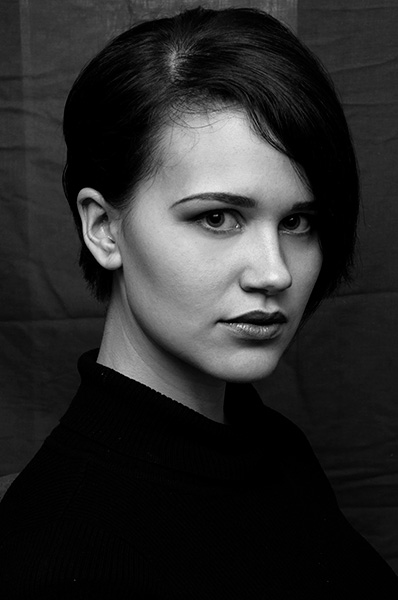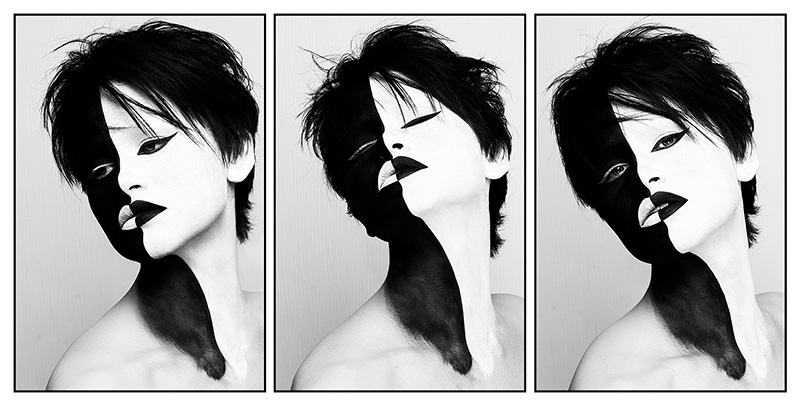
Emma is based in South Wales, UK. She first got interested in photography many, many years ago, but she really got actively stuck into it five years ago. Emma loves teaching others more about photography and retouching and has a soft spot for beautiful landscape photographs. Her favourite photographers are many of the greats - Annie Leibovitz, Paolo Roversi and Gregory Crewdson to name a few. You can find updates and new work up on her Facebook Page
Emma helped judge the Windows and Doors Photo Contest, check out the winners! We had the chance to chat with Emma and get her feedback and awesome input on photography related items.
1. Tell us a bit about yourself, how do you describe your photography style?
I'd currently describe my style as somewhat experimental, and I definitely have a tendency to create more abstract themed pieces. My main focus is on portraits, but I generally just love photographing people. I do self portraits a lot since I'm conveniently available more often than a model is so it lets me try new ideas out as soon as I get them! I'm experimenting with different things to see what I enjoy the most - I think that's where I'll find my creative 'voice' at its loudest and clearest. So far I've found I really enjoy collaborating with other creatives such as makeup artists and hair stylists as having someone else who shares your creative vision that you can bounce ideas back and forth with is so exciting and fun for me! It makes me feel so alive.
I also enjoy teaching others and recently launched Phocussed.co.uk - a site aimed at teaching beginner photographers and editors my methods of editing and creating portraits. I cover basic things that I'd have loved to have known when I was starting out but instead took me years to learn like editing skin, nails and hair, as well as more complex tutorials that deconstruct how a specific image was made so they can use the knowledge to create their own works. There's lighting diagrams, tips, tricks, keyboard shortcuts, the works. You even get to choose how you want to learn - a step by step article, a short video tutorial or a cheat sheet. Plus it's entirely free!

2. When did you start taking photos and what inspired you to get started?
While I was a kid I was told that I had a knack for taking good photos, but I think at the time that mostly just involved being aware of where people's heads and feet were and not cutting them out of the frame! I took more of an interest in photography when I was still in high school, but didn't get much of an opportunity to really try it out for myself until I was in college a few years later.
As for what inspired me, I've always had a great appreciation for art. Photography was a novel medium for me to try. It was different. Before it I used to draw, which gave me a good understanding of tones, light and composition before I ever picked up a camera which was a huge advantage. Before I started I had a few favourite photographs, but as I said, I didn't get into creating my own images until I had the chance to try it out for myself during my foundation course. I actually applied and was accepted into a graphic design degree for when I'd completed my foundation course. One day however, when I was in the college darkroom making prints captured with a huge home-made pinhole camera, I realized I'd practically lived in either that room or one of the two studios for the duration of the course and loved every second. I changed my mind and applied for the photography course instead. I'm happy to say I made the right choice!

3. What has been your favourite shoot and why?
To date, I'd say this one. It was the first time I'd tried flash and blur. Plus it was a heck of a lot of fun making a mess with all the flour! I loved the results and I'm still proud of it to this day. It was published in Turn magazine and made the front cover. I want to try it again with a few differences this time, just to see what happens. I'd like to experiment with the concept a little more and push it a little further to see what I'm capable of.

This one was fun too as though I spent most of it traveling, we first of all got told to stop or get kicked out of the train station as we weren't allowed to photograph there without permission and so spent 20 minutes or so looking for a cafe with outdoor seating that might not mind us spilling tea everywhere. After a quick word with management who turned out to be very interested and more than happy to let me do it (and proudly informed me that the tea set was silver!), ordering the tea, meticulously setting up the shot whilst we got weird looks from other customers, a guy came up behind me, apologized and took a photo himself! Myself and the model laughed about it as we realized just how funny we must have looked. It was a very fun shoot and something quite different from what I usually do.

4. Do you remember a difficult photo shoot session? What happened?
There's no one shoot in particular that was more difficult than the rest, but the more difficult ones have usually either been a case of the model being new to it and needing a little more direction which I don't mind at all as everybody starts somewhere, or the inevitable technical difficulties that almost always arise. It's just a matter of taking it in my stride, applying what I've learned and dealing with it the best I can at the time to get great results despite it. I try and see it as a puzzle. If there wasn't something at least a little challenging about a shoot, I don't think I'd enjoy it quite as much.
Shoots can be difficult in different ways too. For example, self portraits can be quite hard in the sense you often have very little idea as to how the photos are turning out as you take them, so there's a lot of going back and forth to the camera to check. Working with models can be difficult as you have to organize more than just yourself - sometimes you need to organize a whole team of people. For my seven heavenly virtues shoot I had to photograph 7 people in two days, which doesn't sound difficult in that context, but I had to set up the scene and get 'the shot' for each virtue within a thirty minute window as I only had the studio for a couple of hours at a time. I then had to do a couple of reshoots for various reasons such as model illness, technical difficulties etc, but it all worked out in the end! That was hard as I had a lot of photographs to take, edit and get printed and framed on a tight deadline as it was for my final major project, plus it was the largest group of people I'd ever organized at that point in time.

5. What do you carry in your camera bag?
My camera bag is a TARDIS! Ha, I actually have two - one for smaller outings when I know I'll need less gear and a larger rucksack type one that carries nearly everything. In the larger one I take my Nikon D5000 which I'll soon upgrade, a spare D70 body in case the worst happens, my Nikkor 24-70mm f2.8 (my most used lens), Nikkor 50mm f1.8 and my SB-900. I also have my Calumet Pro triggers which are very good, a shoot through umbrella that doubles as a reflective umbrella, umbrella mount and stand, remote control for self portraits, Vanguard Alta Pro 263AB tripod, and a huge foldable reflector. I often take my laptop with me too if I know there'll be a chance for me to use it and I always take spare batteries for the speedlight and triggers, a copy of photographers rights (in the unlikely event that I'll ever need them) and various chargers. I have a full list of the kit I use regularly on my website: https://phocussed.co.uk/category/resources/gear/

6. What advice can you share with other photographers?
Shoot less but shoot often.
It's so easy these days to take hundreds of photos at a single photo shoot as the cost is next to nothing compared to capturing the same amount of photos on film. Taking less photos during a shoot forces you to think more about what you're doing and helps you to learn more about what makes a great shot for you. It's also more satisfying when you get a perfect shot this way as you'll know you were constantly on the look-out for it - it's not as easy to put it down to a 'lucky shot'. You'll learn more in a shorter amount of time and have less photos to go through at the end of it too! Something I was taught to do in order to improve was to limit myself to 36 shots a shoot - the same as a large roll of film. The limitation really forced me to think about what I was doing and to be more present during the moment instead of mindlessly clicking away. I still use it when I feel I need to slow down and think more about what I'm doing.
As well as this, shoot often using this method. The more often you shoot, the better you'll get as you'll get more chances to apply what you've learned from previous shoots. Don't stay in your comfort zone either - constantly push yourself to do things that are new to you or might involve a bit of extra effort as it's the only way you'll grow and improve. You'll often find it's worth it even if the results aren't quite what you'd hoped for - you can learn a lot from your mistakes and use that knowledge next time. Learning to be a photographer is very trial and error, but that's ok.
Get your best work printed too. Professionally printed that is, by a lab. I like gicleés. It's quite affordable and there's something very different but extremely satisfying about seeing your work as a tangible print instead of a bunch of pixels on the screen. It seems to make it more real, and it's a big encouragement to be able to hold it in your hands and say "I made that".

